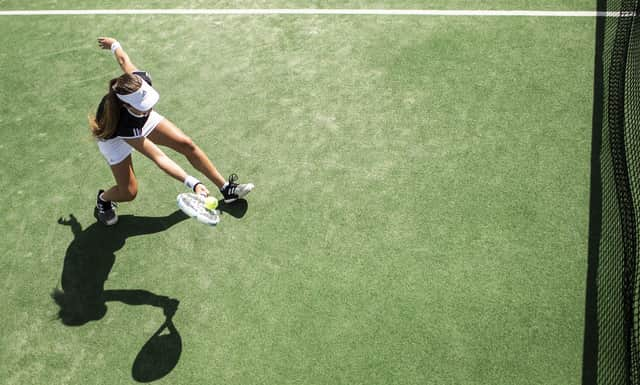FEELING GREAT: Summer and strawberries means one thing … tennis elbow!


And that means an increase in people suffering from tennis elbow. We see it at this time of the year, every year, at the Paul Gough Physio Rooms, but it’s a common ailment for many all year round.
Tennis elbow is an inflammation of the tendons that join the muscles of the forearm to the outside of the elbow. It often occurs due to overusing the forearm muscles and tendons and those around the elbow joint.
Advertisement
Hide AdAdvertisement
Hide AdHowever, it is not always related to tennis. Anyone can suffer from it …. however, tennis players often develop the condition because it stems from repetitive muscle use.
It is caused by small tears in the tendons that join the forearm to the outside of the elbow.
The most common symptom is recurring pain on the outside of the upper forearm, just below the bend of the elbow. Pain may also be felt further down the arm, towards the wrist.
Pain can occur when lifting or bending your arm and also when performing basic actions, such as writing or gripping small objects.
Advertisement
Hide AdAdvertisement
Hide AdThe cause comes from repeating those incorrect movements of the arm, which can lead to small tears in the tendon attachment at the elbow. In tennis, it is the repeated motion and force of hitting a ball with a racquet.
Incorrect technique can cause the power in the swing of a racquet to rotate through and around the wrist to create a movement on the wrist instead of the elbow joint or shoulder. This increases pressure on the tendon and cause irritation and inflammation.
Most often, the extensor muscles become painful due this tendon breakdown. The extensor muscles are those that straighten the wrist.
Like I said, despite the name, tennis elbow refers to any injury to this particular tendon caused by overuse.
Advertisement
Hide AdAdvertisement
Hide AdIt can stem from daily activities such as using scissors, cutting tough food, gardening, sporting activities that involve high amounts of throwing, swimming and manual work that involves repetitive turning or lifting of the wrist, such as plumbing, typing, or bricklaying.
Sometimes, there is no apparent cause.
Rest is important to cure. A break in playing tennis - or repeating the motions that cause it! - allows the tears to heal.
Our physios advise that tennis players strengthen their shoulder, upper arm, and abdominal muscles. Building up the muscles around the joints is a big factor in a lot of common injuries, not just this one.
For more tips and advice, get in touch for a FREE copy of my book The Healthy Habit. It is essential reading people aged 50+ in the North-East, and for anyone that would like to improve their own healthy habits. Please call 01429 866771.